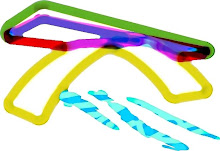quinta-feira, 6 de maio de 2010
D. Maria Pia bridge, nammed after D. maria Pia de Sabóia, was built at the end of the 19th century, enable the linking of Porto to Lisbon by train. At That time the last railway station was in Devesas, Vila Nova de Gaia. . It began being built in 1876 and it was inaugurated in 1877. The bridge was needded due to the economic and social developement of the city and it replaced the ancient Pensil bridge.
The changings operated by the introduction of this means of transport in the city are shown up the constrution of new railway structures ( bridge, tunnels, railway- station) and by the changing of the city and the location of the railway station.
The building enterprise was selected in May 1871. The one chosen was the french firm iffel et ce, Fiver Liles et Batignoles . The Eiffel Project meant the construction of na horizontal span over na arch at the highest level of the banks and it worried about the landscape of the Douro Valley., searching for the place where the river was not so large.
The span, 354 m long and 4,5 m large, is 61 m in water level, building on six pillars that support on na arc with a range of 160 m and 42,60 m arrow, formed by two parabolic, curves that at the top has a separation of 10 m. Rests on roller friction which enables, its expansion i the longitudinal direction and becames independent of the movement of arms.
The constrution contract was awarded on January 5, 1876 and the contract provided for a construction period of 18 months. The Winter has delayed the works that fixed in 22 months ending on october 187. On the conclusion was made na experience of resistence and circulated two trains.Nesta construção, vigiada pelos engenheiros Pedro Inácio Lopes e Manuel Afonso Espregueira, trabalharam cerca de duzentos operários. A montagem do arco, a operação mais delicada exigiu a presença dos engenheiros franceses Emil Nouguier e Marcel Augevère.
The bridge was inaugurated on 4 November with the assistance of the king and queen, who was named the bridge. This structure remainded operational until June 1, 1991. The bridge was used for over 100 years in the service of railways .
sexta-feira, 19 de fevereiro de 2010
This year we had decided that our work was all coming in one bridge: D. Maria Bridge. It's a really old bridge that doesn't work anymore. It is situated in Oporto. We elaborate a detailed Powerpoint, we took in small pieces of the bridge and now we are working on it.
We are also planning our trip to Germany. We are very excited about it and we can't wait!
Time to go... There's work waiting for us.
Cheerios!
quinta-feira, 7 de maio de 2009
quinta-feira, 29 de janeiro de 2009
Christmas customs in Germany

Often children have a advent calendar ( every day they open a “door” and get a little present). On the 6th Dezember is a famouse day: St Nicholas, parents put presents in socks and in fettled shoes. When children were bad, they get a rood.
It gives 4 advents, that are the 4 Sundays till the Christmas evening. Often peoples go in the church on this day. They light up a candle on first advent, 2. advent- 2 candels……. And so on.
Sometimes people bake cookies and eat stolen.
In Germany it gives a Christmas market where you can play games, eat and they sit in carrouse and can buy presents for christmas.
The christmas tree is very important for the German peoples .They put presents under it and on the 24th,Dezember often children open it. On the evening the most people eat sausage and potato salad. On the 25th Dezember the people enjoy the winter-feeling and in the evening they eat duck, dumplings and red cabagge. On the 26th Dezember the people relaxe.
Our trip to Germany
This visit included also the Bulgarian teachers, Olie and Paulie, and was made to prepare all the work and the visits the students will take part in the Comenius project.
They found the school facilities very nice and very different from those in our school and they liked Warnemunde a lot, although it was very windy and cold. Some students, Robert, Felix, Henning and Garlef took them in a guided tour around Rostock, a very nice town with beautiful houses, and showed them many interesting monuments, such as the University building, the City Hall and St Peter´s Church. They were very kind and spoke English very well.
It was a very interesting trip.
Back at school, the teachers showed us some photos and postcards and gave us information about that part of Northern Germany, so different from Portugal. You will be able to see that, when you come around.
The Portuguese Students







